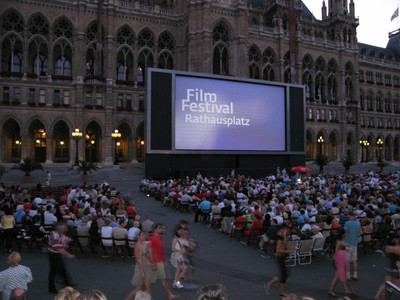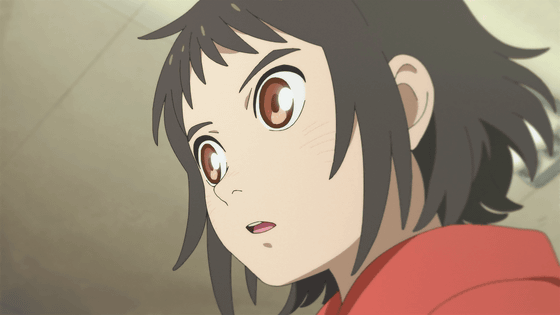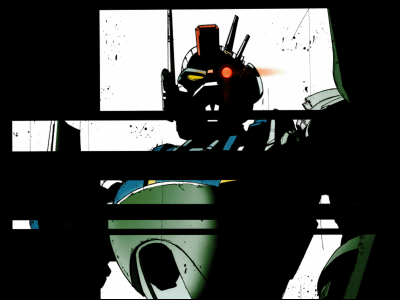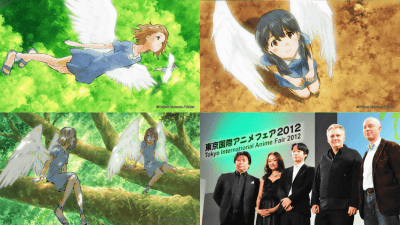A press conference report on the Aichi-Nagoya International Animation Film Festival (ANIAFF), scheduled to be held in December 2025

It has been decided that the 1st Aichi Nagoya International Animation Film Festival will be held in Nagoya, Aichi Prefecture. The festival will be held on Friday, December 12, 2025, and the competition will open on Wednesday, June 11, 2025. In preparation for the festival, a press conference was held on Monday, June 2, 2025 at Akihabara Theater in Tokyo, featuring General Producer Taro Maki, Festival Director Shinichiro Inoue, and Artistic Director Naoshi Kazudo.
Aichi Nagoya International Animation Film Festival
The 1st Aichi Nagoya International Animation Film Festival (ANIAFF) will be held in December 2025! - Aichi Prefecture
https://www.pref.aichi.jp/press-release/aniaff2025.html
The Aichi Nagoya International Animation Film Festival, or ANIAFF for short, was decided to be held thanks to the connections made with Aichi Prefecture Governor Hideaki Omura and Nagoya Mayor Ichiro Hirosawa. There are several animation industry events such as AnimeJapan that bring together the business sector and anime fans, but ANIAFF places emphasis on working closely with creators and production companies, and one of its aims is to create new creativity by bringing together people involved in creative work with users.
Another goal is to provide an opportunity for people to 'pitch' (presentations). Inoue added that while there are events like AnimeJapan and TIFFCOM for business purposes, they are focused on completed works, and there really aren't many 'places to bring in a proposal.'
The logo was chosen through an open competition among students studying graphic design in Nagoya, Aichi Prefecture, and the design by Yuka Oyamada and Marin Seko, fourth-year students majoring in CG design at the HAL Nagoya CG, Design, and Animation Department, was selected. On stage are, from left, Mr. Inoue, Mr. Maki, and Mr. Kazudo.
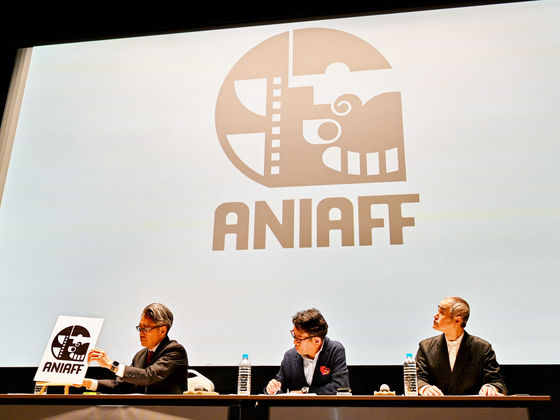
The following are comments from the two designers:
Yuka Oyamada:
I am very honored to have been given the opportunity to create the logo. With the Shachihoko, the symbol of Aichi Prefecture, as the main motif, I aimed for a pop and characterful design that would be familiar to the younger generation. I made use of the Shachihoko's characteristic arched pose, and created a round silhouette like the Japanese flag as a whole. I also tried to incorporate the holes and patterns of a film reel as a film element so that the location and theme of the event would be conveyed naturally. I would be happy if this logo is loved by many people and enhances the appeal of the festival even more. Thank you very much.
Seko Marin:
I was very happy and humbled to have the opportunity to work on the logo mark. This festival is an important event that I myself look forward to. In designing the logo that will symbolize it, I tried to express the sense of excitement and anticipation that animation brings. I wanted to create a rounded, pop impression that would be familiar to visitors, and I hope that the logo will naturally draw people's attention to the charms of Aichi, the host city. I hope that this logo, along with the festival, will become familiar to many people and be loved for a long time. Thank you for giving me this wonderful experience.
The festival's program is broadly divided into six sections: International Competition Section, Invited Screening Section, Feature Screening Section, New Wave Section, Keynote Speech Section, and Seminar/Conference Program Section.
In particular, Kazudo announced that as an international film festival, ANIAFF would like to hold a competition section for feature-length animated films over 40 minutes. According to Kazudo, while the number of feature-length animated films produced worldwide has increased over the past decade, there is still no outlet for highly original works that are targeted at a narrow audience, so he feels that 'it would be good to have a place where these films can be better known.'
The prizes for the competition were announced as follows: Berlin was a bear, Venice was a lion, and so 'Nagoya has it all.' The Grand Prix was the Golden Shachi Prize, the Jury Prize was the Silver Shachi Prize, and the Audience Prize was the Red Shachi Prize. The prize money for each prize was 1 million yen for the Golden Shachi Prize, 500,000 yen for the Silver Shachi Prize, and 200,000 yen for the Red Shachi Prize.
Below is a brief summary of the Q&A session.
KADOKAWA Newtype Suzuki:
What was the trigger for starting this in the first place? Was there anyone who started it?
Maki:
To be precise, it was Governor Omura of Aichi Prefecture. He is a person with a lot of cultural knowledge, and from a very early stage, we hit it off and agreed to hold an international animation film festival in Aichi Prefecture.
Q:
After that, did Maki reach out to other people and broaden the base?
Maki:
that's right.
Asahi Shimbun, Mr. Obara:
When I heard the explanation of the program, I got the impression that it was mostly the same as the Niigata International Animation Film Festival, since the core of the program was the feature film competition and the members were the same. I couldn't see how it was differentiated. Also, there is a concern that the feature film competition often has works overlapping with other festivals, leading to a scramble for good works.
Inoue:
As for differentiation, as we mentioned earlier, we will set up a pitch for the project and ultimately create a market. This was something we were unable to do at the Niigata International Animation Film Festival, so we would like to do this on a larger scale. We would also like to work with creators not only from within Japan, but also from overseas.
A few soils:
I think the point that the formats are similar is because the three of us here are also running the Niigata International Animation Film Festival. However, film festivals such as Annecy, Hiroshima, and live-action film festivals all have formats such as competitions, so I think the key is what to change. As for the competition for works, as you said, I think there have been overlaps in film festivals for some time. However, looking at the world, there is no animation film festival that requires a premiere. For example, some live-action film festivals require a world premiere, or at least a regional premiere, for works in the competition. To take Annecy as an example, some of the works in the Annecy competition have been screened at Cannes. Rather, I think there are still not enough film festivals in terms of 'increasing the opportunities to watch feature films.'
WEB Anime Style Mr. Ogawa:
As mentioned in the previous question, 'This is what we want to do.' I think the phrase 'Mamoru Oshii will be a judge' was a big deal for the Niigata International Animation Film Festival. Also, I think the competition will be the center of the festival, but the name of the chairman of the judging panel has not been announced yet. I think December is quite soon. I think it was a big deal that some people applied to the Niigata International Animation Film Festival because they saw the name Mamoru Oshii.
Maki:
I don't know if I can say that he is 'comparable to Mamoru Oshii,' but please forgive me as I 'cannot announce it here yet.'
A few soils:
I think that other film festivals do not announce the judges so early. I am always thinking about differentiation, and I was told to 'come up with some cool phrase' at the launch of this film festival, but I am not good at such things and I think it is better to build up. I can say 'Anime Powerhouse Japan', but I don't want to use it myself.
Mr. Sekihara of the Nikkei Shimbun:
About 'Pitch'. Is your idea that it would be good to have original projects, rather than projects based on manga? Is it something that will encourage that?
Inoue:
As you pointed out, Japanese anime is strong in manga originals. I also work for the Agency for Cultural Affairs, and I help send new talent overseas. As you said, it is difficult to raise funds for original works, especially new works that have not been released much in the world until now, so I hope that ANIAFF can be a concrete place to do so. This is not a fight with the Agency for Cultural Affairs, but rather a step-by-step approach.
Maki:
We are not deciding on the application format, but we would like to emphasize original works. In the extreme, I think there are young creators who do not have experience in how to approach publishers and how to handle the rights for works that have an original work, so we would like to approach such people as well. If we do not check whether or not there is an original work in the application format, confusion will occur, so we would like to do so.
Mantan Web's Konishi:
All three of you are also participating in the Niigata International Animation Film Festival. Will you be working as staff at both festivals at the same time in the future?
Maki:
To sum up, I have heard that none of the three will be involved in the Niigata International Animation Film Festival, and that it will be handled by a different staff.
Freelancer Taniguchi:
The Niigata International Animation Film Festival was intended to honor people related to Niigata. Nagoya has also produced many creators, and I think that by highlighting such places, it can also play a part in livening up the local area.
A few soils:
I definitely want to do that. When you think about where the audience for the film festival will come from, it's probably mostly local people. To please the locals, we need to think about the connection between the work and the local area. Aichi Prefecture has produced a lot of animation talent. I've been thinking, 'I want to do something with this person,' and I definitely want to do it. I'm also thinking about something like a special achievement award.
'Aichi Nagoya International Animation Film Festival (ANIAFF)' Press Conference Greetings - YouTube
Related Posts:
